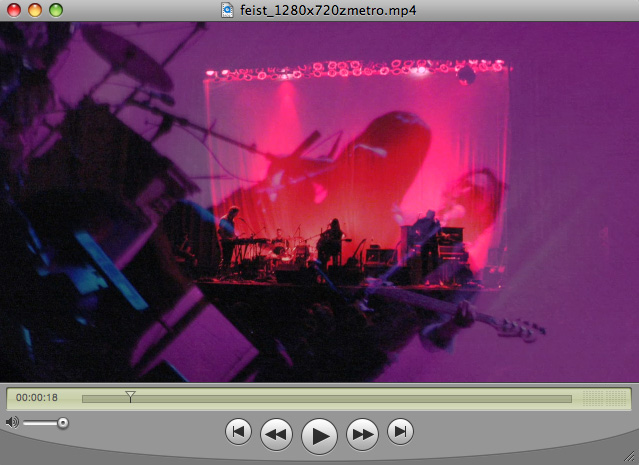1. A Salinas storyteller’s tale
NATIONAL STEINBECK CENTER
Salinas, Monterey County
It is always a challenge to commemorate a life, never mind a writer’s life. Unlike museums devoted to sports legends or war heroes, a museum that honors a man of arts and letters must reflect his quiet, solitary pursuit. Which is to say that such a repository may be unbearably dull. How delightful, then, is the National Steinbeck Center at the end of Salinas’ Main Street, a place whose undercurrents deliver shock after tiny shock — here an arc of unknown history, there a jolt of social commentary. The museum is just a couple of blocks from where townspeople burned Steinbeck’s books, enraged at his perceived betrayal of them and agriculture, the economic star then and now ($3.5 billion worth of crops in 2006) of Monterey County’s show. Never mind that he was a hometown boy — you can see his Victorian birthplace just up the street from the museum and have lunch there — he was Judas to the growers and landowners portrayed unsympathetically in “Grapes of Wrath” and “East of Eden.” The modern-looking center may seem incongruous with the unpretentious persona of the author, whose work won Pulitzer and Nobel prizes. But like his books, it shines a light on the issues, using film clips and displays that are muted set pieces, occasionally somber but never dull. To see this place and the fields that surround Salinas is to understand that Steinbeck’s so-called Valley of the World is really the Heart of California.
Monthly Archives: November 2007
Sarkozy’s Speech to Congress
French President Nicholas Sarkozy [8.5MB mp3 Audio File]:
From the very beginning, the American dream meant proving to all mankind that freedom, justice, human rights and democracy were no utopia but were rather the most realistic policy there is and the most likely to improve the fate of each and every person.
America did not tell the millions of men and women who came from every country in the world and who–with their hands, their intelligence and their heart–built the greatest nation in the world: “Come, and everything will be given to you.” She said: “Come, and the only limits to what you’ll be able to achieve will be your own courage and your own talent.” America embodies this extraordinary ability to grant each and every person a second chance.
Here, both the humblest and most illustrious citizens alike know that nothing is owed to them and that everything has to be earned. That’s what constitutes the moral value of America. America did not teach men the idea of freedom; she taught them how to practice it. And she fought for this freedom whenever she felt it to be threatened somewhere in the world. It was by watching America grow that men and women understood that freedom was possible.
What made America great was her ability to transform her own dream into hope for all mankind.
Leslie Feist Concert Rocks Madison (Video Slide Show)

Leslie Feist rocked Madison Friday evening, 16 November 2007. Despite her severe ankle sprain (evidently while running in Omaha, NE the prior day), Feist and her band entertained the sold out Orpheum Theatre with ouststanding vocals, delightful instruments and an elegant video art show. Check out the playlist here.
More, please.
Watch an MPEG-4 Video Slideshow:
- 1280 x 768 106MB Version [Watch or CTRL_Click to Download]
- 20.5MB MPEG-4 Version for iPod and similar devices. CTRL-Click to download.
Links: Ask Clusty Search | Google News | Live | Yahoo.
Rob Thomas attended the concert and wrote this.
The Weird World of Indecency
So as readers of this site know, I represent Robert Greenwald (pro bono) in a some fair use matters. My first work was on his film Outfoxed. Robert has been continuing the campaign against Fox. His latest is a very clever set of attacks on the “indecency” of Fox News. (The purpose is to push the FCC to unbundle cable channels). Watch the video below and you’ll see the point.
NY Taxis and GPS Receivers
Interesting video clip on GPS receivers and New York City Taxis. The conversations were fascinating. The TomTom 910 GPS receiver was quite useful this summer (just replaced by the 920). The iPHone
Asian Artists Paint the Color Of Money
Throughout Asia’s developing nations, once penniless painters are getting used to this most unexpected emotion. The region’s contemporary-art market has never been so hot. Last year, a collection of dreamlike portraits and landscapes by China’s Zhang Xiaogang raked in just over $24 million — more than British enfant terrible Damien Hirst made in 2006. In March, a sale of modern Indian art in New York City raised a record $15 million, including just under $800,000 for Captives, a stark evocation of desiccated torsos by New Delhi–born Rameshwar Broota. Two months later, an auction in London elicited $1.42 million for a Tantric-inspired oil painting by India’s Syed Haider Raza. Even in Vietnam, idyllic rural scenes coated in the country’s distinctive lacquer that sold for a few hundred dollars a few years ago are now selling for 10 times that. A gouache-and-ink painting by Vietnamese post-impressionist Le Pho, whose work is part of the permanent exhibition at the Modern Art Museum in Paris, captured nearly $250,000 at a Singapore sale. Overall, leading auction houses Sotheby’s and Christie’s auctioned $190 million in contemporary Asian art last year, compared to $22 million just two years before. “This is just the beginning,” says Swiss art dealer Pierre Huber, who in September oversaw a debut contemporary Asian art fair in Shanghai. “For so long, people did not know about Asian art. But now the world is turning to Asia, and what they see is amazing.”
Flying the Ultra No-Frills Airline
Passengers departing on Skybus Airlines from Columbus, Ohio, walk out of a brand new terminal and traipse across the tarmac to board their planes. In some cities, travelers fetch their own luggage off luggage carts. The airline has no telephone number that customers can call.
With fares starting at $10 one-way, do you expect more?
Skybus Airlines Inc., now six months old, brings a new level of bare-bones service — and very affordable prices — to the U.S. skies. The carrier also raises the question of just how cheap U.S. travelers will go to travel. So far, many seem to be willing to go very cheap. At a time when bus companies and Amtrak struggle to attract customers, and many travelers still gripe about the loss of in-flight meals and the addition of so many airline fees, Skybus filled more than 80% of its seats all summer.
Putting the Past to Work
IN AN AGE OF INFORMATION OVERLOAD, identifying the most useful information in a timely fashion isn’t easy — and it may be some comfort to know it never was. Yet by studying the adaptive skills of earlier captains of commerce, entrepreneurs in even the most cutthroat businesses can learn how to smack down the competition.
The key: Embrace invention — even that of your competitors — and use it better and faster than they do.
In the 1870s, John D. Rockefeller had a telegraph line run to his Euclid Avenue home in Cleveland. When he came home for lunch, he could stay in touch with his Oil City, Pa., contacts for updates on gushers and dry holes. He could then telegraph his brother in New York to adjust the price of kerosene for the European market, and his brother could pass the price on to Europe by trans-Atlantic cable.
Although Standard Oil employed telegraphers, John D. Rockefeller sent and received his own “e-mails.” Sending and receiving Morse code at commercial speeds were not easy skills to master, but Rockefeller was “computer-literate.” He had to be skilled in the current technology to have the best information and act on it.
The oil business of that day was not a fuel business. Standard Oil sold illumination. Tallow and whale-oil concerns were its competitors. Kerosene lamps, especially with mantles that burned white-hot, were a great advance in technology. Standard Oil produced a lamp-fuel kerosene of such purity that explosions were greatly reduced. Its five-gallon branded blue tins became known around the world. (Meanwhile, the byproduct of kerosene distillation, gasoline, was discarded as a nuisance.)
Pomp, Circumstance & Hockey: Wisconsin Badgers vs. North Dakota Fighting Sioux


 Details of the Badgers 4-0 win available here. North Dakota had an amazing 43 shots on goal, including 25 in the third period. A tremendous, fast paced game. One of the best I’ve seen.
Details of the Badgers 4-0 win available here. North Dakota had an amazing 43 shots on goal, including 25 in the third period. A tremendous, fast paced game. One of the best I’ve seen.
A Provocative Photo
Gorbachev, The Berlin Wall and Louis Vuitton.
More here.